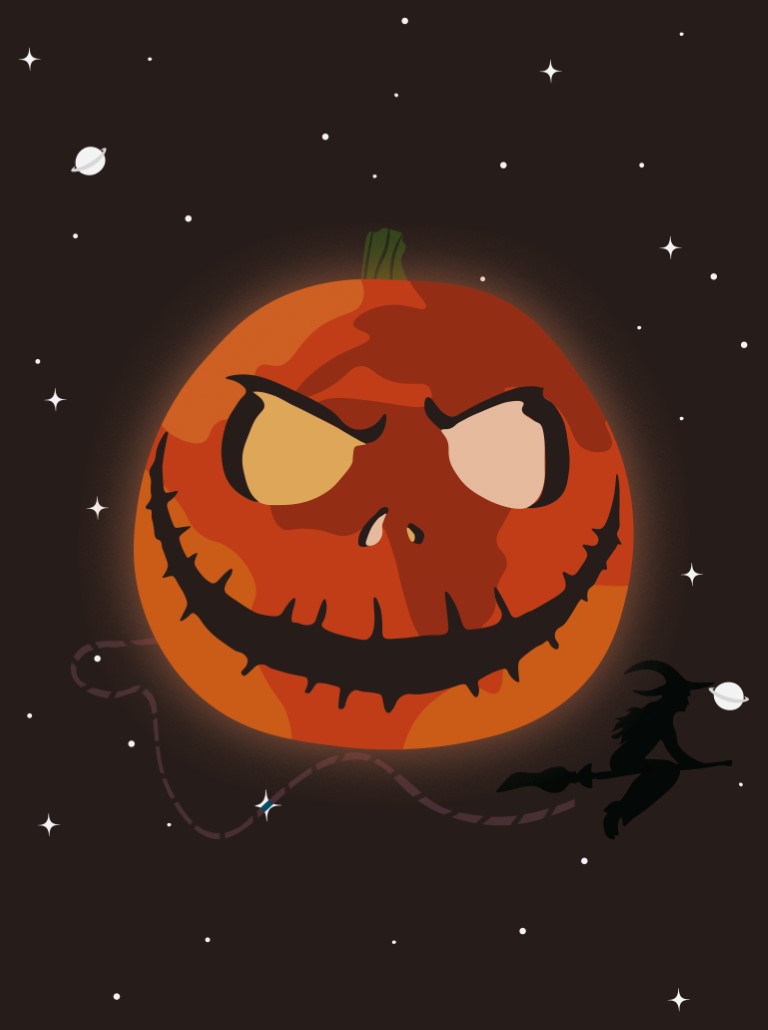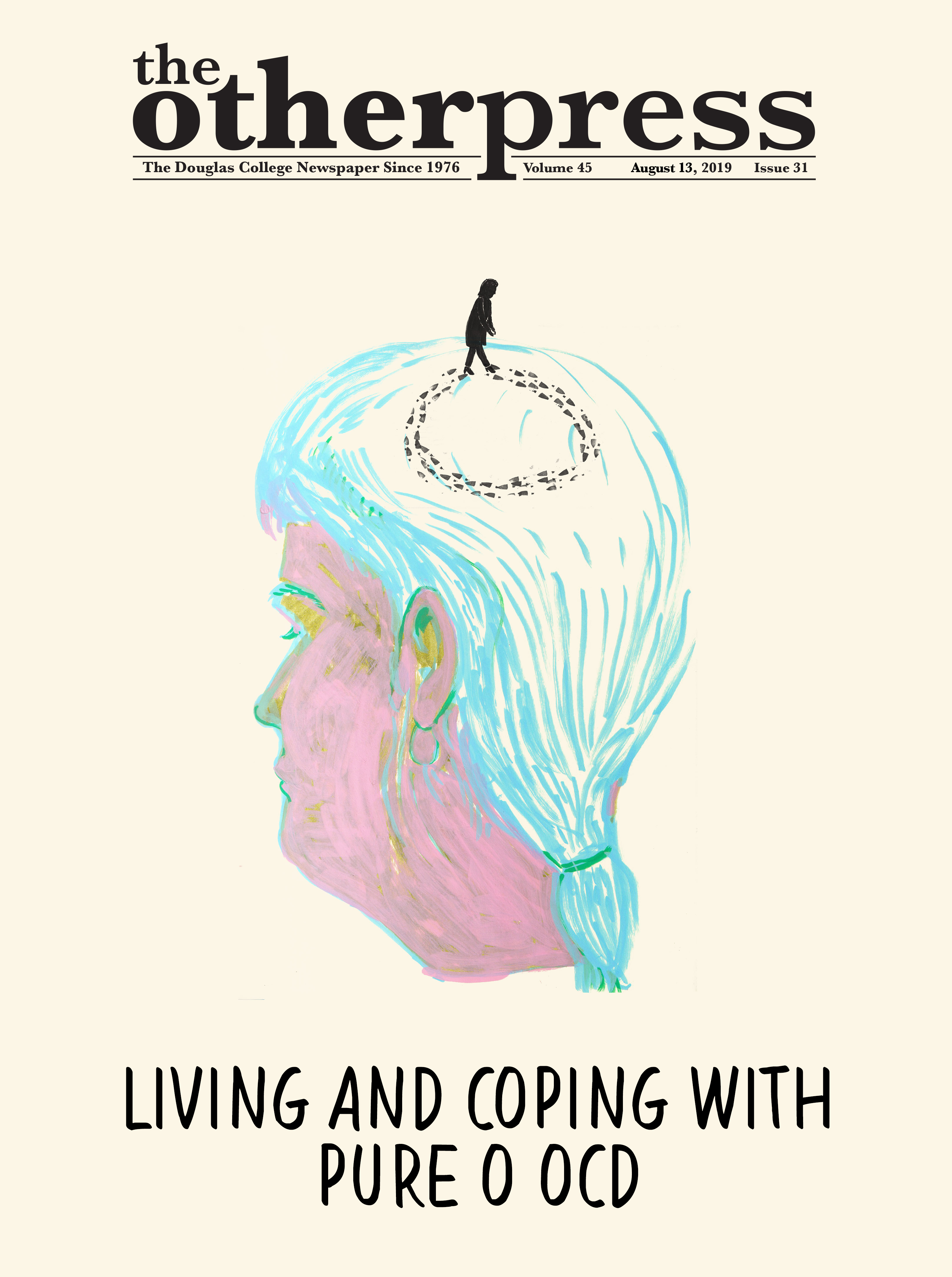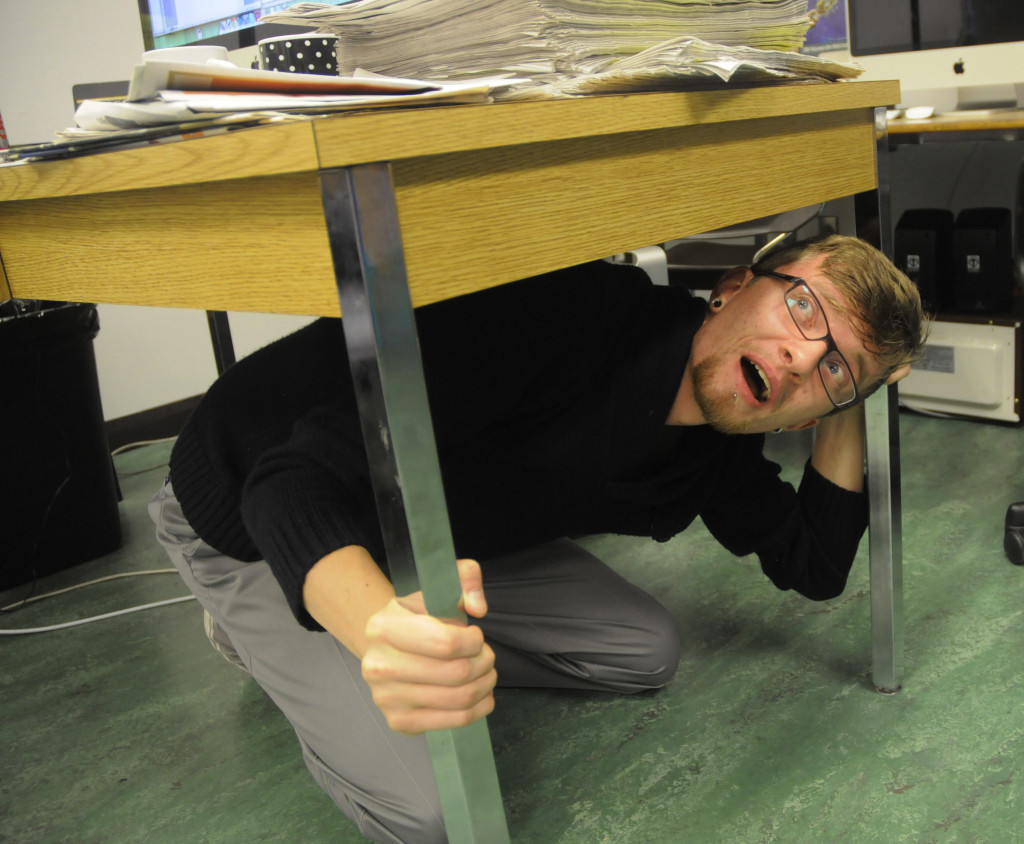
Death, cake, and crime: the evolution of this imported holiday
By Janis McMath, Editor-in-Chief
Halloween is my favourite holiday, and clearly many other Canadians agree with this; Halloween is the second most popular holiday (commercially) behind Christmas in this country. This holiday’s industry is estimated to be worth one-billion dollars and per capita, Canadians outspend Americans during this spooky scary seasonal event. Despite being a holiday that is literally all fun and games now, Halloween is a Frankenstein’s monster of many older, darker, and much more secular events.

Much of this event’s roots are in a two-day pagan festival called Samhain (pronounced sow-in). The Celtics lived in Ireland, the UK, and northern France over 2,000 years ago and October 31 was the end of harvest, summer, and their year—so it was a time many believed the dead could enter the physical world again. They lit huge fires, sacrificed cattle, prepared offerings for those (like fairies) entering through the barrier between living and dead; people dressed as monsters or animals to ensure that those creatures would mistake them for fellow spirts and not take them through the gate to the other world. Samhain also included a tradition of pranks—often blamed on the fairies and creatures. Originally, the event was seen as mandatory and required citizens to report to authority figures; failure to comply was believed to cause bad fortune—like illness or death.
THE ORIGINS OF PUMPKIN CARVING
AND GOING DOOR TO DOOR

As Samhain progressed, so did the many traditions to keep away the spirits. Carving was originally done on turnips, and they were carved with faces to either represent lost loved ones and to guide good spirits, or they were made to scare off bad ghosts with their demonic turnip faces (they truly look horrifying). This comes from Irish folklore which tells of Stingy Jack—sentenced to suffer until Judgement Day because he was a cheap cheat. Condemned to wander the globe in a state between living and dead, he only held an ember in a carved-out turnip to guide his way—earning him the name Jack of the lantern, or Jack-o’-lantern.
In the 1840s, the Irish and Scottish fleeing the potato famine brought Halloween to Canada and the United States. As North America had many more pumpkins than turnips at the time, and pumpkins are harvested right around Halloween, the transition to carving pumpkins was a natural shift. Turnips also were pretty difficult to carve.
As Samhain celebrations revolve around appeasing the dead in hopes of successful harvest and a bountiful new year, it makes sense that another tradition kind to the spirits was added; food and drink was left out for interested spirits that either needed to be appeased or were friendly ancestorial sprits. Citizens would leave out extra plates with food and update family spirits on their lives; children played games that were thought to be good fun for the ghosts. After the supper was consumed, people would leave their windows open (and sometimes would leave out a nice cake!) in case spirits wanted to enter again later. This event was called “dumb supper.”
THE CHRISTIAN SPIN-OFF

After the Celts were conquered and Christianity spread in the areas they lived, the church made their own holiday called All Saints’ Day (also known as Hallowmas, with hallow meaning saintly) which celebrated saints on the first of November—and it is commonly believed that this was an attempt to overshadow Samhain. These celebrations included All Saints’ Eve (or All Hallow’s Eve) which was on October 31, All Saints’ Day on November 1, and All Souls’ Day on November 2.
Samhain and Hallowmas’ events were similar, as the Christian celebrations also included big bonfires and dressing up—but their costumes consisted of saints, devils, and angels instead. Somewhat similar to dumb supper, on Hallowmas soul cakes were given out to the needy in exchange for prayers for the dead relatives of those giving out the treats. Further on, when the holiday became secular, children adopted the tradition in their own neighbourhoods. Instead of prayers, kids would perform in return for ale, food, and money—it was called “going a-souling.”
“TRICK OR TREAT” WAS NOT AN EMPTY THREAT

After awhile, Hallomas turned into Halloween and that Samhain-Hallomas combination holiday was brought to North America. When the event was first brought over to Canada and the US however, much of the traditional fun of the holiday—like having your fortune told, your future husband predicted, and bobbing for apples—was lost. Instead, focus was placed on the ancient Samhain tradition of pranking one another. The pranking became so rampant that Halloween was considered a dangerous holiday at the time; many cities and towns wanted to ban the event. Indicative of this fact, a newspaper in southern Alberta (called the Lethbridge Herald) was recognized as the first to coin the term “trick or treat.” The 1927 article was discussing the trend of pranksters going from house to house demanding treats in turn for protection from the trickery that was common of the night during that era.

Thankfully, by the 1950s they had successfully bribed the nation’s children with delicious treats and fun activities to change the tone of the holiday to a family friendly one. This kept the youth occupied and in turn prevented many kids from setting fires, breaking windows, and stealing things. Now the phrase trick or treat offers no real threat, and we should count ourselves lucky.
HALLOWEEN-LIKE TRADITIONS ELSEWHERE
The Western world has inspired many to import Halloween to places all over the globe; even if countries do not celebrate it nationwide, many individuals participate in this unique version of Halloween that has evolved through multiple cultures. Although many countries participate in the special traditions of Halloween, some already have their own similar spiritual holidays that revolve around paying respects to the dead and departed. For example, this includes China’s Hungry Ghost festival, South Korea’s Chuseok, Nepal’s Gai Jatra, Japan’s Obon, and Cambodia’s Pchum Ben to name a few. One of the most popular examples is Mexico’s Day of the Dead festival. This celebration is actually a marriage of Mesoamerican rituals that honour the dead, the European Hallowmas, and various pieces from Spanish culture.
Just like All Saints’ Eve, All Saints’ Day, and All Souls’ Day, the holiday is celebrated over October 31 to November 2. The aesthetic is death, but the celebrations are joyous, positive, and celebratory in respecting the lives of those who have passed. Similar to the Pagans, the festival is fueled by the idea that spirits are able to enter the physical realm easier at this time of year, so the population creates parades, parties, and dances to welcome the ghosts of loved ones back. In fact, pre-Hispanic cultures like the Aztec, Toltec, and Nahua people viewed mourning as a great form of dishonour; dead people were a part of the collective as much as anyone. These ideas inspired modern-day Día de los Muertos as a day for the dead to return to receive respect—and ceremony!
In celebrating the Day of the Dead, many create altars—makeshift gift sets that often include favourite meals, water, family photos, candles, incense, and marigolds. All of this is done as a gesture of hospitality for spirits, as they are thought to be famished after their arduous journeys back to our world. Other traditions include sassy, silly, and sarcastic poems written in the style of a tombstone epitaph. These short poems, called literary calaveras (skulls), often mock the living. Similar to Halloween, costumes are a huge part of this event; being a such a social holiday, people of all ages adorn fancy colourful clothes and get their face done up cute and skeleton-like.
A BAN ON HALLOWEEN FUN?!

Some countries celebrate both religious holidays and Halloween side-by-side—embracing old culture and new. For example, places like Italy celebrate Tutti i Morti (All Souls’ Day) nationwide, but have children in costumes trick-or-treating in their neighbourhoods on the last day of October. Sweden similarly celebrates All Saints’ Eve (Alla Helgons Dag) but has seen Halloween grow in recent years.
On
the other hand, some in Russia are continually attempting to ban the
celebration. Russian lawmakers say the holiday is
associated to “activities of dangerous occult organizations” and that “any
attempt by any stupid teacher to celebrate Halloween at school is nothing more
than a gross violation of federal law.” One lawmaker even suggested that
parents call a special hotline and report school
celebrations of Halloween. The head of the republic of Crimea called the holiday a “means of cultural
and spiritual aggression directed at destroying the traditional values of
Russia.” In Russia, religious groups and conservative politicians often take
aim at taking down this holiday.
Halloween is a holiday with seasonings from all
around the globe. Knowing that it took a lot of work and natural transitions to
get the celebration to where it is today should make us favour it more than we
already do. Enjoy Halloween for the fun, safe, delicious, creative, and
family-friendly event it has become and don’t take it for granted—appreciate
the fact that your favourite holiday isn’t under attack by political and
religious groups!


